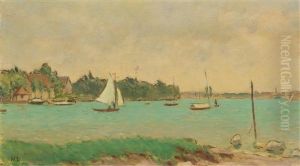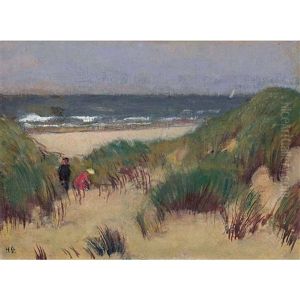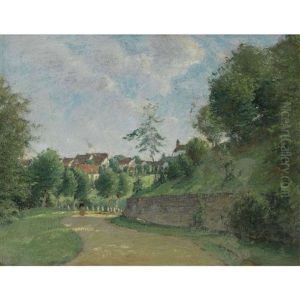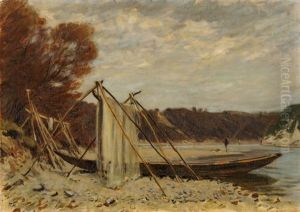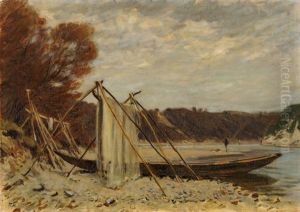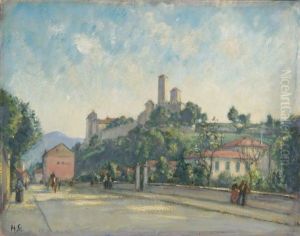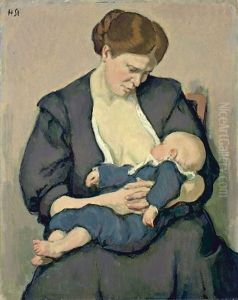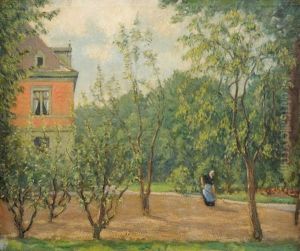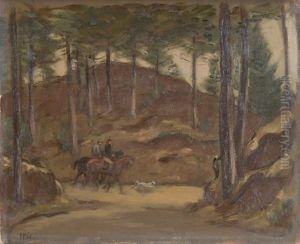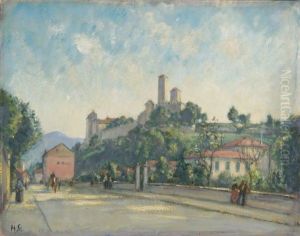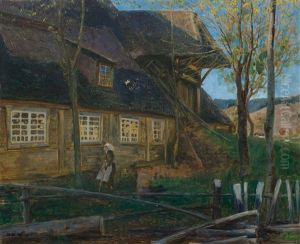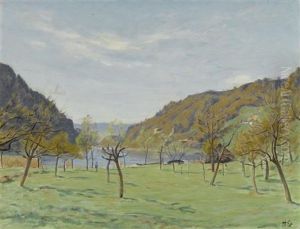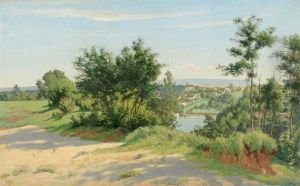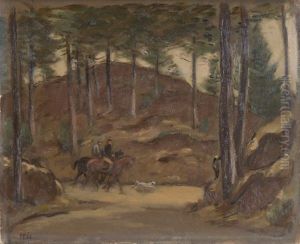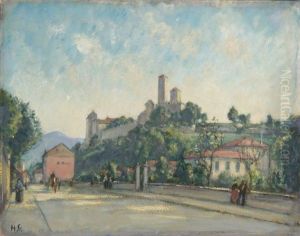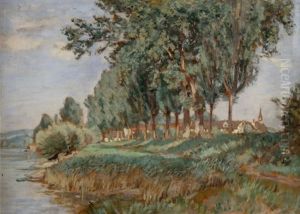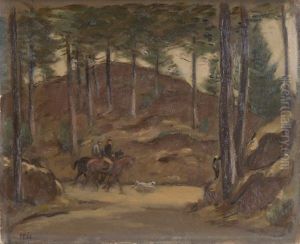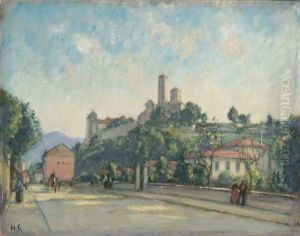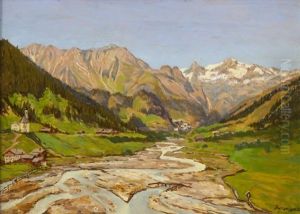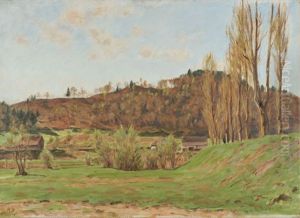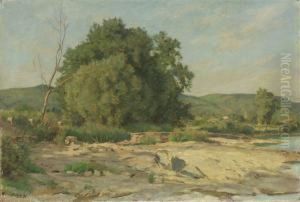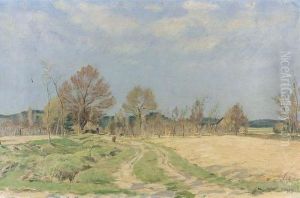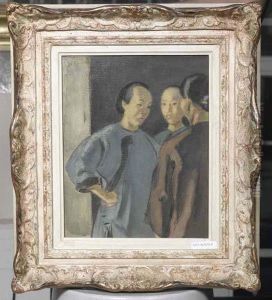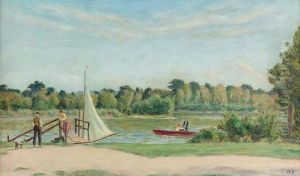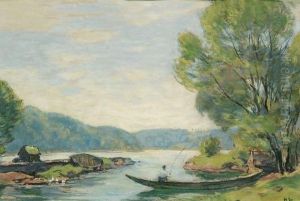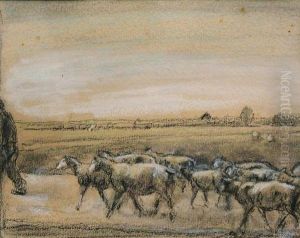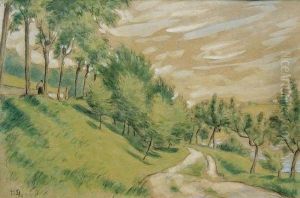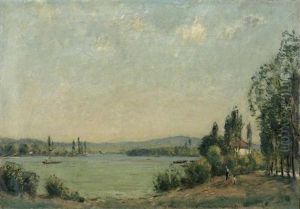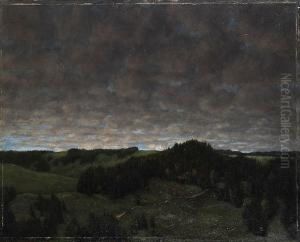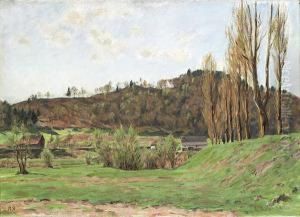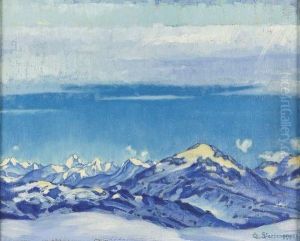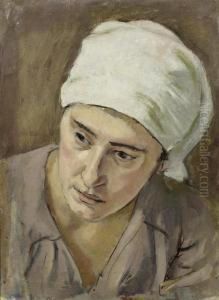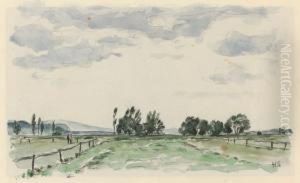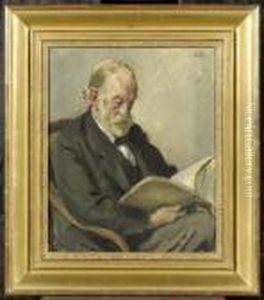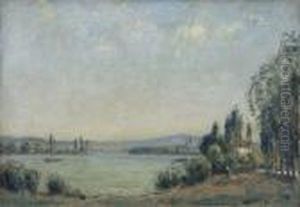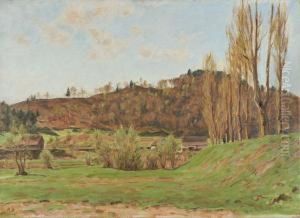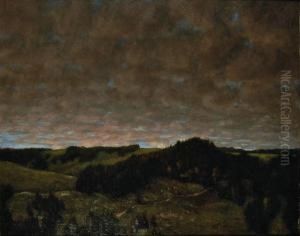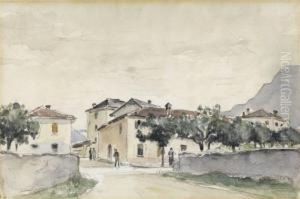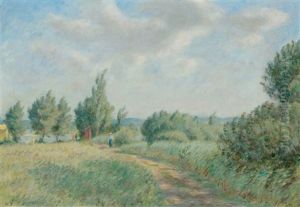Hans Sturzenegger Paintings
Hans Sturzenegger was a Swiss painter and etcher known for his landscape and ethnographic works. Born on June 19, 1875, in Schaffhausen, Switzerland, he began his artistic education in Munich, Germany, where he studied at the Academy of Fine Arts. He was influenced by the Munich Secession, a movement that sought to break away from the traditional academic style of the 19th century, favoring more modern and expressive forms of art.
Sturzenegger's travels had a profound impact on his work. He ventured to remote regions of the world, including North Africa, the Middle East, and Asia, where he was particularly taken with the landscapes and people of India and Tibet. His experiences in these locales inspired a series of ethnographic and landscape paintings that showcase his attention to detail and his fascination with different cultures.
During his career, Sturzenegger also produced a significant body of etchings, which contributed to his reputation as a master of the medium. His etchings often featured the same subjects as his paintings, with a particular focus on capturing the nuances of light and shadow.
Sturzenegger's work was well-received in his time, and he participated in numerous exhibitions throughout Europe. His paintings and etchings are held in various collections and have been featured in exhibitions posthumously, allowing his artistic legacy to endure beyond his lifetime.
Unfortunately, detailed biographical data on Hans Sturzenegger is relatively scarce, and much of his life outside his travels and artistic production remains unknown. He passed away on November 2, 1943, in Muralto, Switzerland, leaving behind a body of work that continues to be appreciated for its artistic merit and ethnographic significance.

